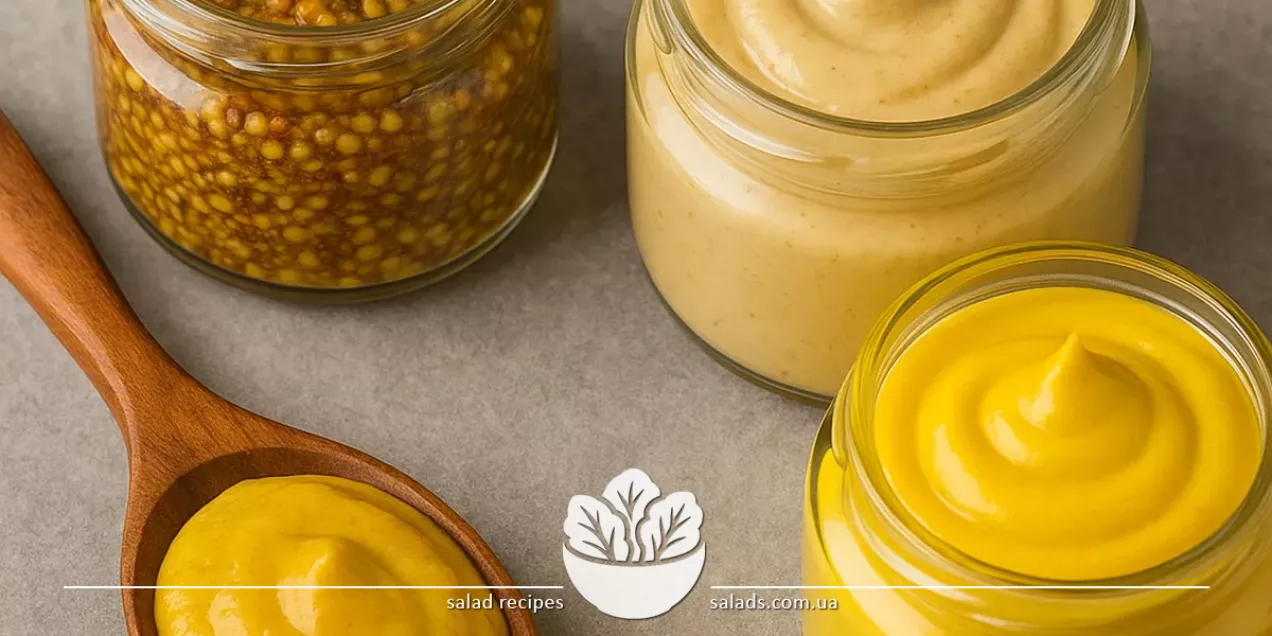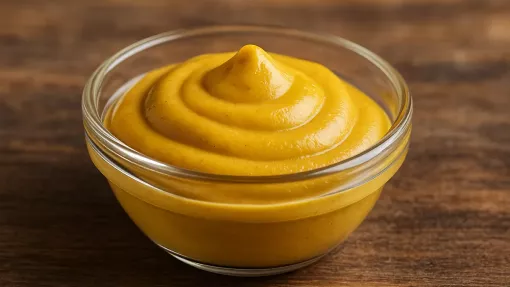Types of Mustard

Mustard is a spice derived from the seeds of various mustard plants, including white, yellow, black, and brown varieties. It has a distinct sharp taste and strong aroma used to enhance the flavor of meat, fish, vegetable dishes, sauces, and marinades. Mustard can be found in the form of powder, seeds, or ready-made sauces with varying degrees of heat. In cooking, it is widely used in both traditional and modern recipes. For more sauce options, see the sauces section.
Different Types of Mustard
Classic Recipes with Mustard
Mustard is one of the most popular condiments used in many traditional and modern dishes. It often serves as a base for marinades and sauces that give meat, fish, and vegetables a spicy and tangy kick. For example, mustard is combined with boiled sausage in salads and appetizers to add a bold flavor note. In classic recipes, mustard is used to prepare marinades for meat and fish, where it helps tenderize the product and enhance its natural flavor. Mustard also enriches salads, especially those with vegetables like potatoes, making them more flavorful and aromatic.
It is also used in combination with olive oil to create light sauces and dressings that can be served with rice, such as white rice, as well as with seafood like tuna, giving dishes a distinctive and rich flavor. Thanks to its versatility and pungency, mustard remains an essential ingredient in many global cuisines, helping to create both traditional and original culinary compositions.
Mustard in World Cuisines
Mustard is a popular spice in many culinary traditions around the world. In European cuisines, it is used as a spicy condiment for meat, fish, cheese, and vegetables. In German cuisine, mustard is often served with sausages and hams, while in French cuisine, it forms the base for classic sauces like Dijon mustard, which is widely used in dressings and marinades. In American cuisine, mustard is added to salads, sandwiches, and sauces for grilling and barbecue, where its heat enhances the main flavor of the dish. In Asian countries, mustard is part of various spice blends and sauces used to prepare meat and seafood dishes. Due to the wide variety of mustard types and levels of heat, it fits harmoniously into many culinary styles, adding a vibrant flavor and aroma to meals. Its versatility allows it to be used in both everyday cooking and festive dishes.
Choosing and Assessing Mustard Quality
When choosing mustard, it is important to consider the ingredients and the product’s form. Natural mustard is made from mustard seeds, vinegar or lemon juice, water, and salt, without artificial colorings or preservatives. It can come in the form of powder, seeds, or ready-made sauces with different textures – from liquid to thick paste. The spiciness of mustard can range from mild yellow to very hot black, depending on the seed type and preparation method. Milder options are usually chosen for salads and dressings, while spicier ones are used for marinades. Be sure to check the production date and expiration date, as mustard loses its aroma and intensity over time. When choosing high-quality mustard, look for a strong aroma and smooth texture – signs of rich flavor and culinary value. Such a product can highlight the qualities of any dish.
Preparing and Using Mustard
Mustard is made from ground or whole mustard seeds mixed with liquids – water, vinegar, or lemon juice – as well as salt, spices, and sugar. The proportions of these ingredients determine the sauce’s spiciness and consistency. To soften the flavor, honey, yogurt, or mayonnaise is sometimes added. In cooking, mustard is widely used as a condiment for meat, fish, vegetables, and cheese. It serves as a base for marinades and sauces and is also added to salads, sandwiches, and cold appetizers. Mustard is often combined with other seasonings like garlic, honey, herbs, and spices, enhancing its flavor and versatility. With its sharpness and aroma, mustard intensifies the taste of dishes, making them bolder and more vibrant. It is an indispensable ingredient in many culinary traditions worldwide.
Storing Mustard and Using Leftovers
Mustard in powder or seed form should be stored in a dry, cool, and dark place in an airtight container to preserve its aroma and heat for a long time. When stored properly, dry mustard retains its properties for 1-2 years. Ready-made mustard sauces, especially homemade ones, should be kept in the refrigerator for no longer than 1-2 months, while industrial products should be stored according to the manufacturer’s instructions. Once opened, the sauce should be used within a few weeks and kept in a sealed container. Leftover mustard can be used to prepare new sauces, marinades, or added to salads and hot dishes to enhance flavor. Proper storage and use help preserve its taste and avoid food waste.
